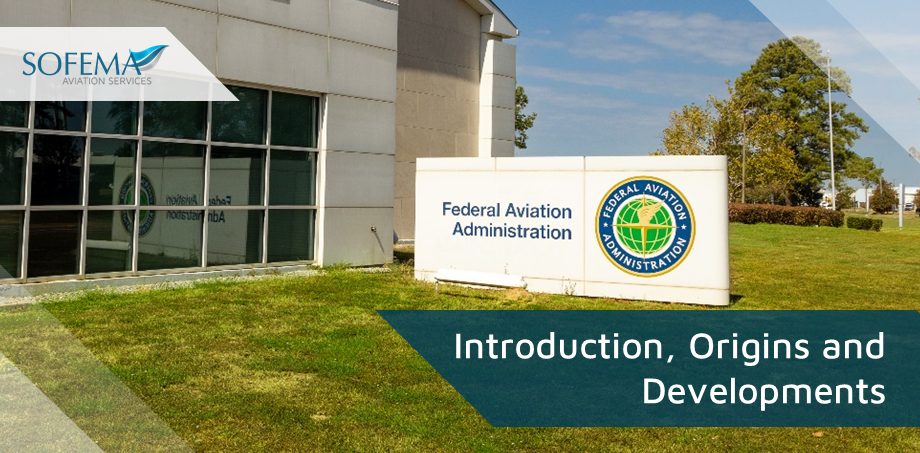Sofema Aviation Services (SAS) www.sassofia.com Presents an Overview of the Role of the US Federal Aviation Administration (FAA) and its Relevance in 2023
Introduction:
The US Federal Aviation Administration (FAA) is the national authority governing all aspects of civil aviation in the United States. Its wide-ranging responsibilities include the regulation and oversight of commercial space travel, air traffic control, and the certification of personnel and aircraft.
The FAA has evolved significantly since its inception and has played a crucial role in shaping the US aviation industry. It has embraced technological advancements, improved safety and security measures, and navigated various challenges.
Current Challenges
The FAA faces a number of challenges. The rapid growth of drone technology has created a need for new regulations and enforcement capabilities. The increasing trend towards commercial space travel, as spearheaded by companies such as SpaceX and Blue Origin, also presents both regulatory and safety challenges.
Cybersecurity is another critical concern, with the increasing digitization of aircraft control systems opening potential vulnerabilities.
Finally, the FAA has the continual challenge of ensuring the training and procedures used by pilots and air traffic controllers keep pace with the evolving technologies and changes in the aviation environment.
Origins and Developments:
The Federal Aviation Administration (FAA) is a vital regulatory agency responsible for overseeing and managing civil aviation within the United States. The Air Commerce Act of 1926 created an Aeronautic Branch of the United States Department of Commerce. Its functions included testing and licensing of pilots, certification of aircraft and investigation of accidents.
In 1934, the Aeronautics Branch was renamed the Bureau of Air Commerce, to reflect the growing importance of commercial flying. It was subsequently divided into two authorities: the Civil Aeronautics Administration (CAA), concerned with air traffic control, and the Civil Aeronautics Board (CAB), concerned with safety regulations and accident investigation.
The FAA was established in 1958, originally under the name “Federal Aviation Agency.” The impetus for its creation was the Air Commerce Act of 1926, and the Civil Aeronautics Act of 1938 which sought to regulate air commerce in the interest of national defense and the promotion of foreign and interstate commerce. The mid-20th century was a time of significant aviation growth and increased complexity in air traffic, and there was a need for a centralized authority to oversee safety standards, regulate air traffic, and manage the burgeoning national airspace system.
Landmark Events:
The establishment of the FAA in 1958 consolidated the regulatory responsibilities of the Civil Aeronautics Administration and the Airways Modernization Board. This merger aimed to improve efficiency and address the growing needs of the aviation industry.
The FAA has been actively involved in redesigning the NAS to accommodate the growing demand for air travel. This initiative involves optimizing airspace, improving navigation procedures, and implementing advanced technologies to enhance capacity and reduce delays.
Aviation Safety and Security Enhancements: Following the tragic events of September 11, 2001, the FAA took substantial measures to enhance aviation security. These included the creation of the Transportation Security Administration (TSA) and the implementation of more rigorous security screening procedures and protocols.
Driving Change:
The FAA has been primarily driven by the need to ensure the safety and efficiency of the national airspace system.
- Rapid advancements in technology, increasing air traffic, and evolving security threats have necessitated continuous adaptation and improvement.
- The FAA’s current position revolves around regulating and overseeing all aspects of civil aviation, including air traffic control, aircraft certification, pilot licensing, airport operations, and safety oversight.
Current Position:
As of 2023, the FAA remains one of the world’s premier aviation authorities, leading the way in the advancement of the aerospace industry while maintaining its core values of safety and regulatory compliance. The agency has evolved to meet the challenges posed by the growth in unmanned aircraft systems (drones), the resurgence of commercial space travel, and the integration of artificial intelligence in aviation systems.
Future Direction:
Integration of Unmanned Aircraft Systems (UAS): One of the significant challenges and future directions for the FAA is the integration of UAS, commonly known as drones, into the national airspace system.
- The FAA has been working on regulations and standards to ensure the safe operation of UAS while accommodating their potential commercial and recreational applications.
- The FAA will continue to focus on the implementation of the Next Gen program. This involves the full integration of advanced technologies, such as Automatic Dependent Surveillance-Broadcast (ADS-B), performance-based navigation, and data communications, to enhance airspace capacity, reduce congestion, and improve fuel efficiency.
- With the increasing reliance on digital systems and connectivity, the FAA is addressing cybersecurity threats and ensure the resilience of critical aviation infrastructure.
o Safeguarding against potential cyber attacks and protecting sensitive aviation data is crucial moving forward.
Next Steps
Follow this link to the SAS Library to find & Download related documents for Free
Please see see the following Introduction to Aviation Regulatory Structure – ICAO – EASA – FAA – 2 Days and get in touch with us at www.sassofia.com or email team@sassofia.com
Tags:
Aeronautic Branch of the United States Department of Commerce, Air Commerce Act of 1926, Air Traffic Control, aircraft control systems, aviation growth, Aviation Industry, Civil Aeronautics Act of 1938, Civil Aeronautics Administration (CAA), Civil Aeronautics Board (CAB), Civil Aviation, commercial space travel, Cybersecurity, drone technology, investigation of accidents, regulatory agency, United States, US Federal Aviation Administration (FAA)




